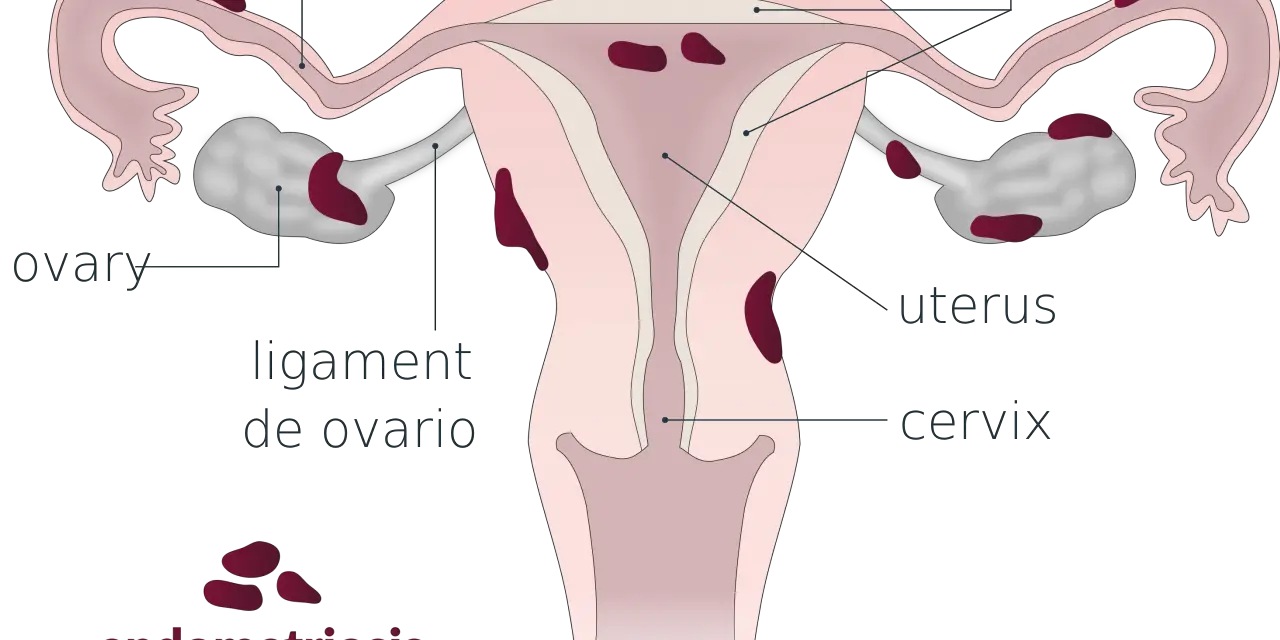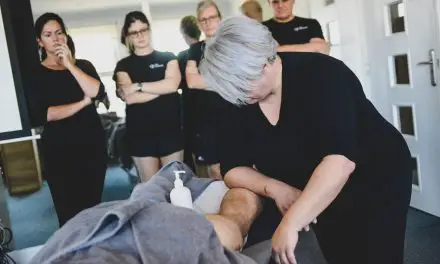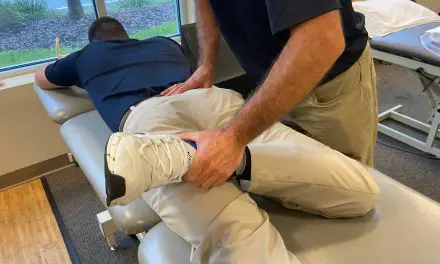Endometriosis is a painful condition caused by the lining of your uterus growing outside of the uterus, like your fallopian tubes, ovaries, and the outside part of your uterus. During normal ovulation, this tissue is shed from your body through menstruation. When the uterine lining is outside of the uterus, the tissue has no way to leave your body and becomes trapped which can cause life-changing pain. Those with endometriosis describe symptoms such as pelvic pain, bloating, cramping, altered bathroom habits, fatigue, and depression.
There’s no known cause of endometriosis, but retrograde menstruation and immune system disorders are among some of the proposed reasons this happens. Risk factors for developing endometriosis include:
- early onset of menstruation
- late onset of menopause
- short menstruation cycles
- heavy periods
- high estrogen levels
- family history
Massage therapy may be one way to help those with endometriosis manage their pain and symptoms. Massage to the stomach, sides, and back has been shown to be helpful in those with pain related to ovulation or endometriosis. Massage can also be helpful in managing pelvic pain and the pain experienced during sexual intercourse.
What is endometriosis?
Endometriosis is a disease of the endometrium (the tissue that lines your uterus) where the lining grows in places it doesn’t belong (like outside of the uterus). Some areas where the tissue commonly grows are your ovaries and fallopian tubes. Although it’s less common, it can also grow in your vagina, cervix, vulva, bladder, bowel, or rectum. It would be rare to find the tissue outside of the pelvic region but it can happen.
Recent research recognizes endometriosis as more than a gynecological disease. The clinical presentation of the disease varies considerably from person to person and is now considered a systemic disease for its effects outside of the pelvic region. Endometriosis can also affect metabolism, cause systemic inflammation and is associated with pain sensitization and mood disorders.
Endometriosis is a relatively common disease that affects women of child-bearing age. Those in their 30s and 40s seem to be particularly likely to develop it which may make it difficult to become pregnant.
Common symptoms include:
- painful menstrual cramps
- chronic low back or pelvic pain
- painful intercourse
- painful bowel or bladder movements
- bleeding or spotting between periods
The last symptom is a sign of several pelvic diseases and should be checked by your physician if it happens often. Also, pain associated with endometriosis can affect everything from activities of daily living to intense exercise.
Infertility or difficulty getting pregnant may also be a symptom of endometriosis. When the uterine lining grows outside of the uterus, the egg is unable to become implanted to create a viable pregnancy because these growths can stop the egg from getting into your fallopian tubes. Your body may also develop scar tissue as a response to this condition, which can make it harder to get pregnant.
Stomach or digestive problems may also occur with endometriosis. Higher than normal hormone levels can lead to nausea. These hormones, called prostaglandins, may also cause smooth muscle contraction in the digestive system, which results in diarrhea and/or intestinal pain and cramping.
How massage can reduce pain
Massage therapy is not a cure of endometriosis pain, but it may reduce the severity of the symptoms. This works by a process called descending modulation in your brain and spinal cord. This is where specialized regions on the brainstem are activated when they receive input on pain, temperature, pressure, or vibration. Once the brain stem is activated by these signals, the information is modulated by the central nervous system which makes a determination about the type and intensity of pain you will perceive based on things like tissue damage, prior experience, environment, and expectation.
Descending modulation is controlled by neurotransmitters, such as serotonin, GABA, and endogenous opioids. Opioid receptors are found in several areas of your body including the brain, spinal cord, and peripheral organs. When this process is working well, it can be much stronger than typical pain medications like morphine.
The prevailing school of thought in pain science is the neuromatrix theory of pain. This includes the psychology of pain which helps guide individualized clinical decision-making. That said, the theory holds space for the role of sensory input (from peripheral nerves, organs, and primary senses) which may offer some explanation as to how massage acts as a pain reliever.
Based on descending modulation and the neuromatrix theory, massage therapy is thought to be an effective approach to pain relief for patients with endometriosis via the sensory input provided by the physical touch of the hands to the skin (and through the skin to the visceral organs). It can provide short-term relief of pain and spasm as well as decrease pain during menstruation and sex.
Several different types of massage may be used, such as Swedish, aromatherapy, and lomi lomi. Diagnosis, body region, history of massage, type of tissue being addressed, and tissue sensitivity may all influence what type of massage stroke is chosen to address pain.
How do I self-massage for endometriosis pain?
Massage can be quite useful in managing the symptoms of endometriosis—and you can do it yourself!
- Begin by lying on your back in a comfortable position where you can relax.
- Using an open/flat hand, apply gentle pressure in a clockwise direction to the lower half of your abdomen. This follows the direction of the colon and can also be useful for digestive issues.
- Use 5 to 10 passes nightly before bed to improve sleep and decrease pain through stimulation of the “rest and digest” system.
If you have a partner, have them move their hands in small circles starting from your navel and moving outward. A bit of lotion or a few drops of oil on the massager’s hands can make this stroke more comfortable for your skin. Flat hands can also be used to apply gentle pressure in areas of cramping.
As with any condition, you should be cautious with any massage stroke that causes increased pain or unintended side effects.
What causes endometriosis?
The cause of endometriosis is unknown, but there are two main hypotheses that explains the underlying factors of the disease. Historically, researchers believed retrograde flow was the cause of endometriosis where cells from menstruation end up in the wrong place and create the painful tissue growths.
This explanation is limited in its application because nearly all who have some form of retrograde flow but far fewer develop the disease. Also, some of the areas where endometrial tissue has been found are not accessible to the cells that come from retrograde menstruation.
Histology may provide an alternative explanation for the cause of the disease. The misplaced endometrial tissue may be traced back as far as in utero development of the female reproductive system or the Mullerian duct. It’s been proposed that endometriosis is a result of abnormal differentiation or migration of any part of the Mullerian duct system. This hypothesis explains the extremely rare case of endometriosis in a male because males have Mullerian ducts early in development.
Endometriosis treatments
There is currently no optimal treatment for endometriosis. At least some of the reason why this disease is so hard to treat is owed to the inadequate understanding of its causes and natural course.
Medications
Pharmacological management of endometriosis is typically the first-line intervention. People who are not actively trying to get pregnant can use hormonal birth control to stop bleeding or reduce pain. An intrauterine device (IUD) may also be an effective way to decrease pain and bleeding. These hormonal treatments are most effective in women who do not have severe pain or symptoms.
Surgery
If you have failed conservative treatments or have severe symptoms, your doctor may suggest surgery. During the procedure, the surgeon will find and remove the areas of endometriosis. Following surgical intervention, you will most likely restart hormone therapy unless you are trying to get pregnant.
Complementary medicine therapies
Some women have successfully managed the pain and symptoms of endometriosis using outside-of-the-box thinking. Acupuncture, physical therapy, massage therapy, chiropractic care, special diets, and the use of transcutaneous electrical stimulation can all help decrease the pain and discomfort caused by the disease.
Does exercise help reduce endometriosis symptoms?
The jury is still out on whether or not exercise has a substantial impact on the symptoms of endometriosis. Several review studies have found exercise to either be pain relieving or non-impactful. Because there’s a dearth of randomized-controlled trials, it’s impossible to truly know whether or not exercise is beneficial for endometriosis.
That said, what we do know is that exercise can help with anxiety and depression which are associated with endometriosis. People with less severe symptoms may be more tolerant of exercise and find some pain relief from moving their bodies. Also, the use of progressive muscle relaxation has been shown to reduce pain, anxiety, and depression in people taking hormone medications for endometriosis.
Getting help
Being diagnosed with endometriosis is sometimes delayed by women thinking the pain they are experiencing is normal “period pain.” If you’re suffering from painful periods, pelvic pain, pain with intercourse, and painful bowel or bladder movements, you should see your physician to rule out endometriosis as the cause.
The process of making the diagnosis of endometriosis starts with a pelvic exam. Your physician may want more testing after that which could include pelvic ultrasound, magnetic resonance imaging (MRI), or laparoscopy.
Ultrasound and MRI are relatively simple procedures that use external tools to help your physician visualize the amount and location of the scar tissue.
Laparoscopy, on the other hand, requires a surgeon, who will make a small incision in your abdomen and then insert a laparoscope in order to get a better idea of where the problem tissues are.
Resources
The American College of Obstetricians and Gynecologists
U.S. Department of Health and Human Services, Office on Women’s Health

Penny Goldberg, DPT, ATC
Penny Goldberg, DPT, ATC earned her doctorate in Physical Therapy from the University of Saint Augustine and completed a credentialed sports residency at the University of Florida. She is a Board Certified Clinical Specialist in Sports Physical Therapy.
Penny holds a B.S. in Kinesiology and a M.A. in Physical Education from San Diego State University. She has served as an Athletic Trainer at USD, CSUN, and Butler University.
She has presented on Kinesiophobia and differential diagnosis in complicated cases. Penny has published on returning to sports after ACL reconstruction and fear of movement and re-injury.
Outside of the clinic, Penny enjoys traveling, good cooking with great wine, concerts, working out and playing with her dogs.






